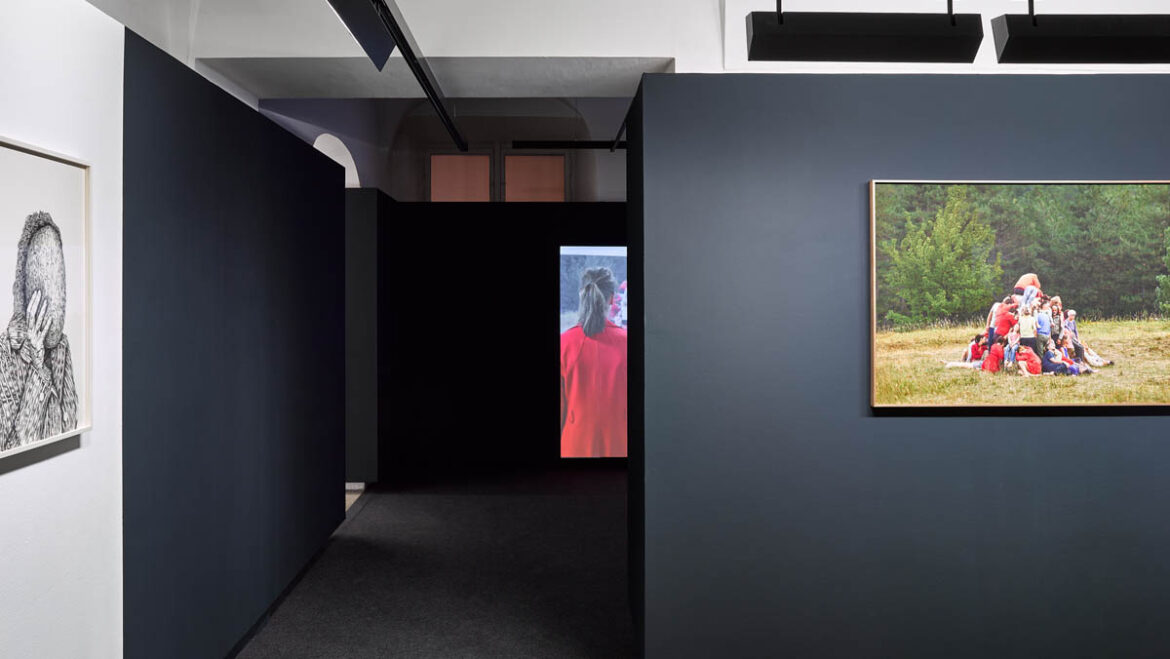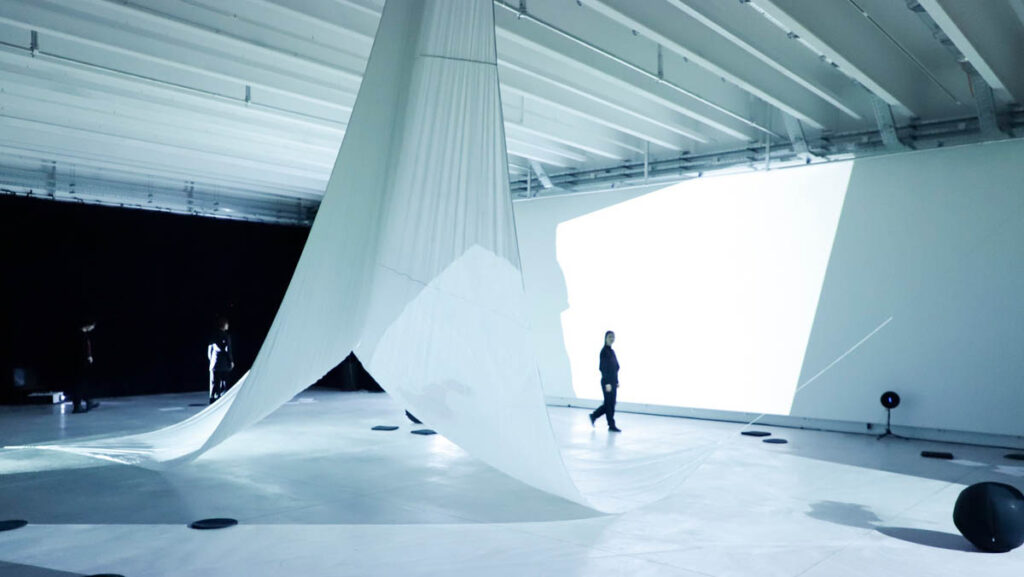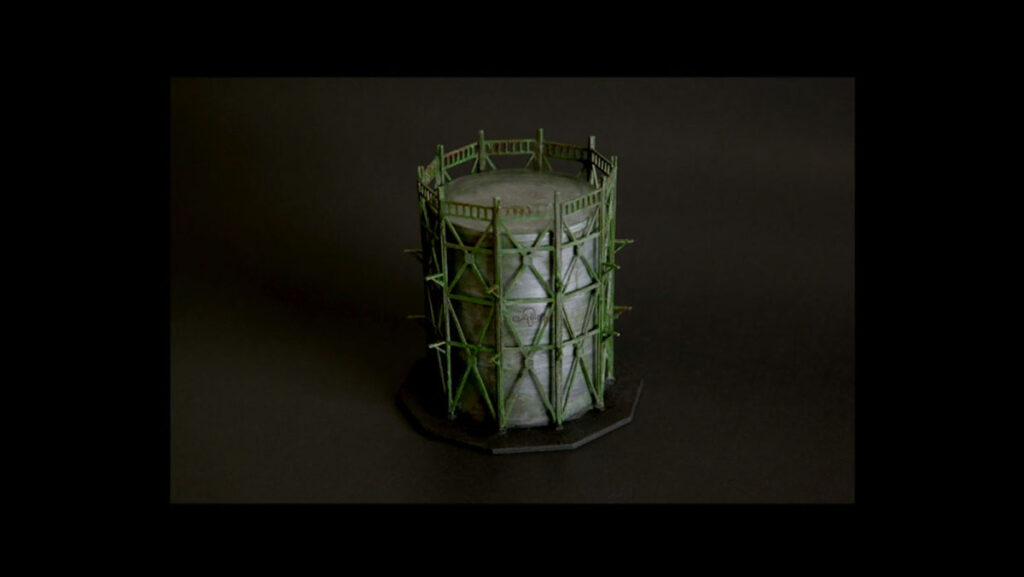
The exhibition WORKING CLASS DAUGHTER borrows its title from the book Working Class Daughters published by artists Karolina Dreit, Kristina Dreit and Selina Lampe in 2024. In this work they address, among other things, the multi-temporality and diverse realities of class, as well as taking a closer look at the concept of class and classism in the context of art and culture: “(…) the neoliberal approach, forcing precarious working and living conditions [is] also an issue in the field of art and cultural production. The neoliberal logic of self-marketing, insecurity, solitude and isolation characterises work in the field of art and culture just as much as work in the service sector or informal and undocumented sectors.”1 As studies show, the number of students from non-academic households at art universities is disproportionately low.2
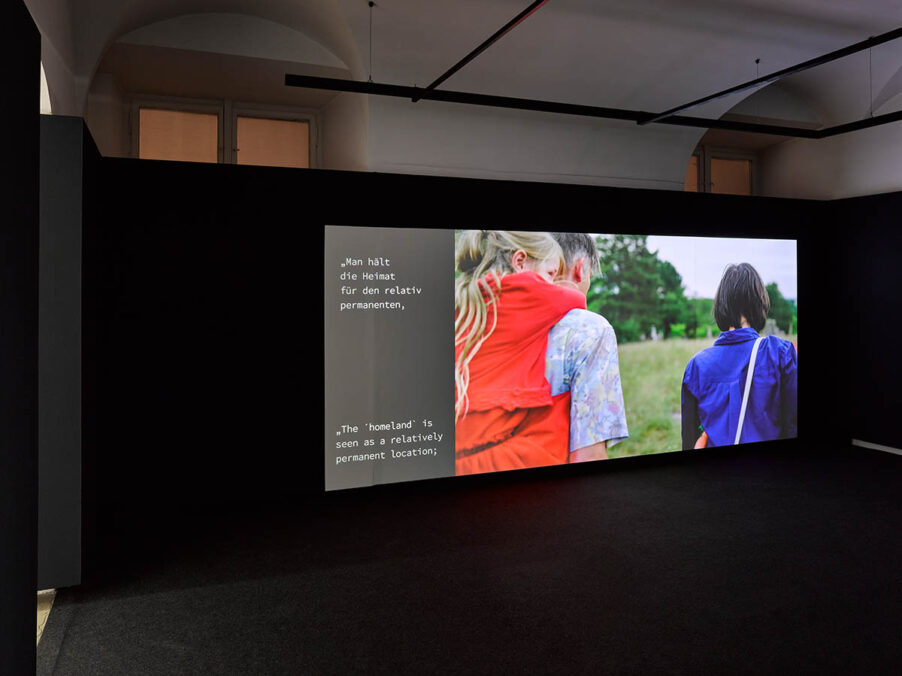
In the video installation Becoming Outline [No. 4], a key role is played by her own body and by spaces. Based on reconstructions of the 18 ground plans of housing in which she has lived [No. 3], Bajtala approaches their spaces and appropriation. The narrative begins with the artist’s childhood memories and the story of her escape at the age of 7, as well as the reality of her parents’ lives as refugees in Austria. These are memories of expectations and the sense of needing to conform – to be well-behaved, not to stand out, to be a ‘good foreigner’, to act subordinate – it is about the ‘eyes of the others’ [No. 2]. By means of this narrative style and locating the film in the present, the boundaries between present and past dissolve in Becoming Outline.
Using the drawings of the work cycle SCHWERE ARBEIT [No. 1 and Nos. 6-10], Bajtala builds another bridge between different realities, past and present. In her drawings, she deals with her mother’s hands and thus with the latter’s body memory as depicted in the video Im Akkord [No. 5]. The film shows how her mother, or rather her mother’s body, remembers the sequence of movements and gestures of piecework in an optics factory and reproduces them with a specific rhythm. The mother’s factory work is set in relation to her daughter’s work. The title of the cycle SCHWERE ARBEIT thematises artistic work as wage labour.
This aspect is best evident in Arbeitszeitprotokoll [No. 9], which depicts the hours worked on the drawings created for the exhibition at the Neue Galerie. These drawings refer to texts and pop songs about the subject of class, which are important references in Bajtala’s artistic practice.
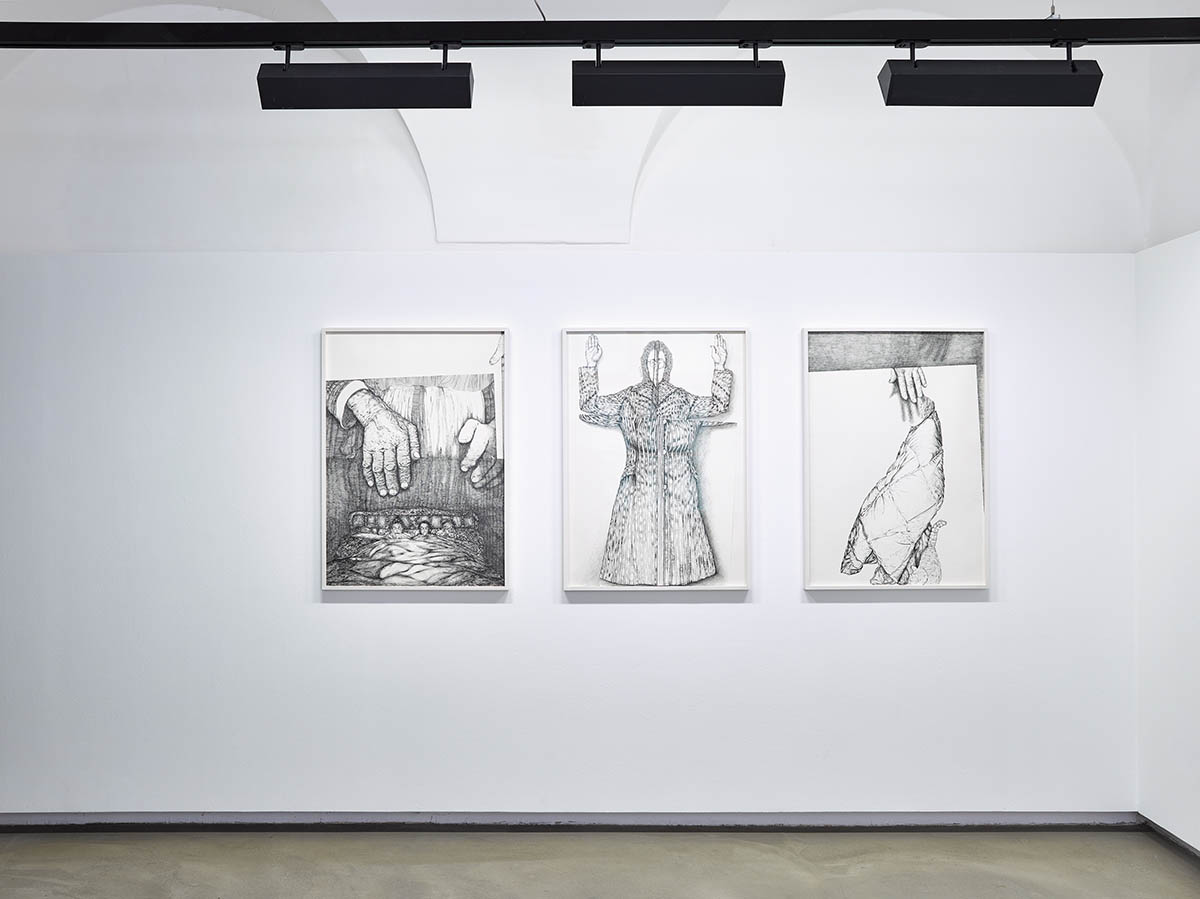
The title Die feinen Unterschiede [No. 6], for example, alludes to Pierre Bourdieu, If you want my future, forget my past [No. 8] to the Spice Girls, and Working Class Daughter (refuse to surrender) [No. 7] to the title of the exhibition and so to the book mentioned initially, as well as to her own history of origin, whereby the additional phrase “refuse to surrender” – highlights the effort behind a “change in milieu”3 as “you can tell climbers are climbing”4.
The drawing Fragebogen [No.10] invites us to explore our own class affiliation. It is a questionnaire from the Practical Handbook of Social Justice and Diversity, in which one’s own background and experiences relating to class can be compared and scrutinised along with current attitudes and perceptions. This was the starting point for the cycle of SCHWERE ARBEIT. At the exhibition, visitors have an opportunity to fill in a questionnaire and help with research for a work in progress by Miriam Bajtala.
In the final room of the Neue Galerie, the three photographs in the series Familie (1) [No. 11] illustrate what happens when a person is reduced to their (economic or social) background. In the photographs of the artist’s family members, “who adopt stereotypical role models in their ‘new homeland’ and fulfil the landscapes of longing for a ‘better West’ in their own homes”5, the identity of those portrayed is concealed behind a white bed sheet.
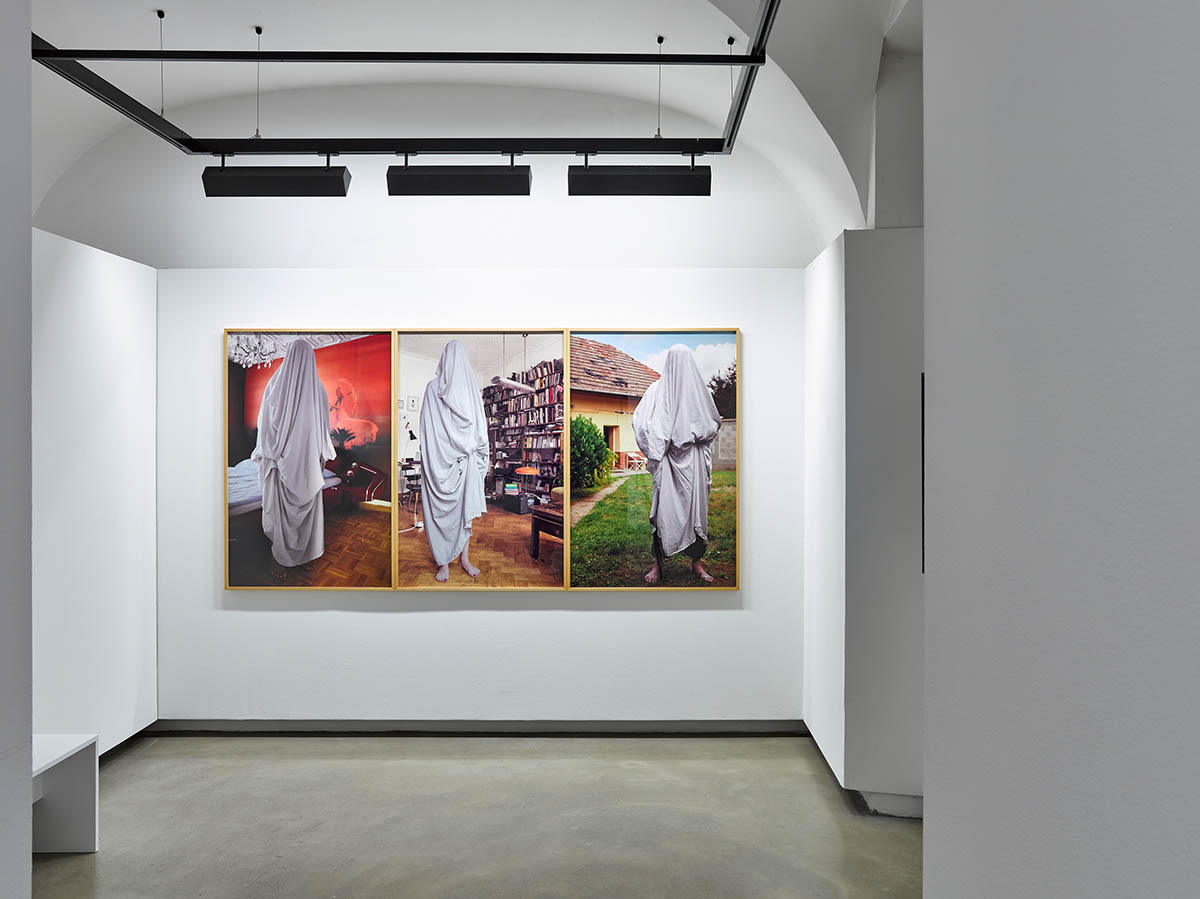
Consequently, the living rooms and bedrooms depicted in the background only permit us to conjecture about the people and speculate about their origins, identity and assimilation.
Landscapes of longing also comprise part of the video work Erste Landschaften #Mirka [No. 12], in which Bajtala explores the potential and diverse possibilities of fictional and documentary narratives. In seven parts, in loose fragments, a narrator explores the essence of memories. While remembering, she sees no images, hears no sounds, feels no textures and smells no odours, even though memories consist of images, textures, odours and sounds. The fact that memory can be both physical and spatial is also visualised in the two other video works in the exhibition. Remembering becomes a method, thus resisting the “history-less space of neoliberal self realisation”6.
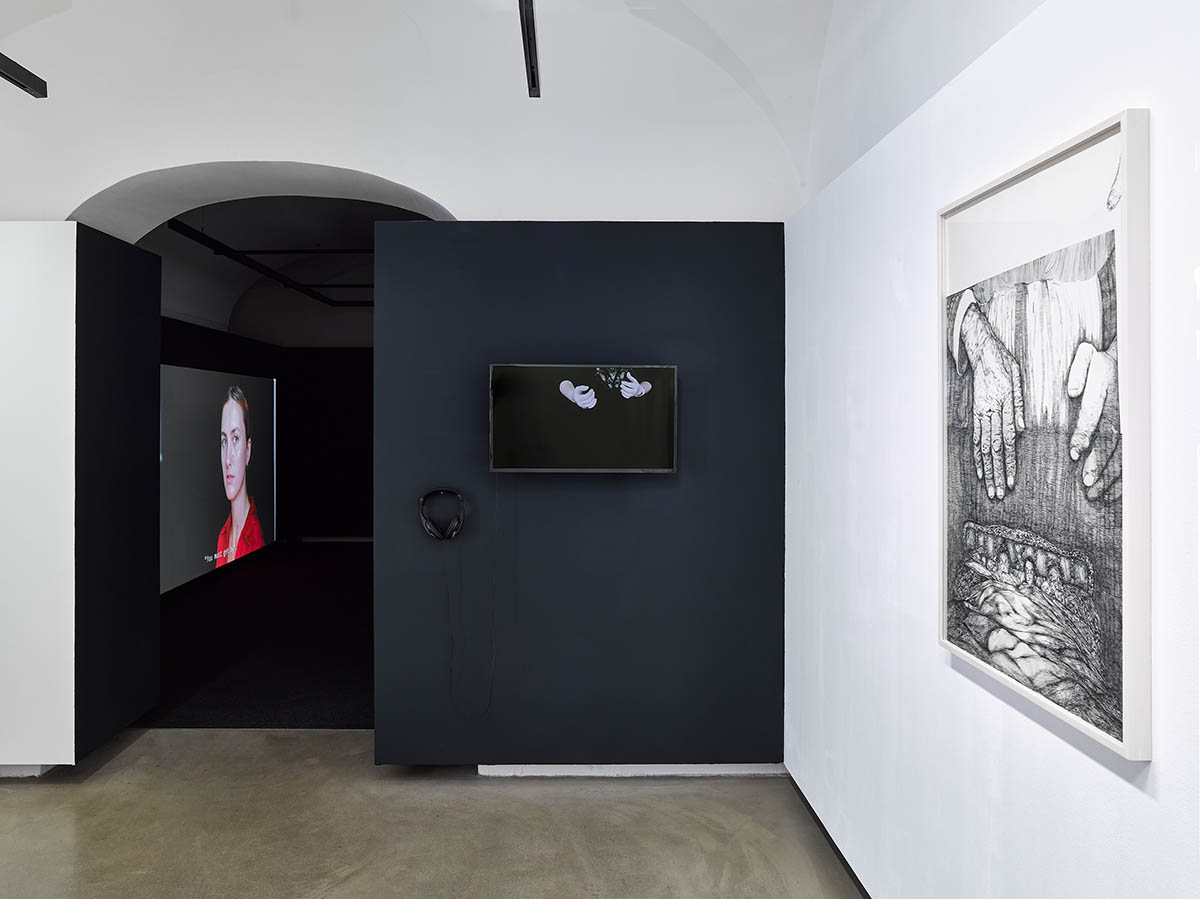
For a long time, class was considered a thing of the past. It is only since the publication of Didier Eribon’s Returning to Reims in 2009 that the question of class, and with it the issue of social participation, again became part of a wider discourse. In her solo exhibition Working Class Daughter, Miriam Bajtala attempts to reconceive the question of class on a number of different levels.
Exhibition: Miriam Bajtala – WORKING CLASS DAUGHTER
Curatorial support: Bettina Siegele
Exhibition duration: 28.02. – 03.05.2025
Address and contact:
Künstler:innen Vereinigung Tirol*
Neue Galerie
Rennweg 1, Großes Tor, Hofburg, 6020 Innsbruck
www.kuveti.at
- Karolina Dreit et al., Working Class Daughters: Über Klasse sprechen (Wien Berlin: Mandel- baum Verlag, 2024), p. 19. ↩︎
- Ruth Sonderegger, „Multiple Klass(e)ifizierungen in der (kunst-)universitären Bildung. Plädoyer für eine Auflockerung“, in Klassen Sehen: Soziale Konflikte und ihre Szenarien, ed. by Drehli Robnik (Münster: Unrast, 2021), p. 37. ↩︎
- Cf. Daniela Dröscher, Zeige deine Klasse: Die Geschichte meiner sozialen Herkunft (Hamburg: Hoffmann und Campe, 2023). ↩︎
- Ilija Matusko, Verdunstung in der Randzone (Berlin: Suhrkamp, 2023), p.11. ↩︎
- Bajtala, Körper meiner Arbeit, p. 131. ↩︎
- Karolina Dreit et al., Working Class Daughters, p. 13. ↩︎




